When searching for an exquisite diamond for an engagement ring or other luxurious jewelry piece, clarity grade is a fundamental characteristic to consider. Two of the most sought-after clarity levels in the diamond industry are VVS1 (Very Very Slightly Included 1) and IF (Internally Flawless). Comprehending the distinctions between VVS1 and IF diamonds is integral to making an educated choice. In this article, we will explore the distinctions, traits, and points to contemplate when deciding between VVS1 and IF diamonds.
Table of Contents
VVS1 Vs IF Diamonds: Overview
VVS1 Diamonds
A VVS1 diamond exudes distinguished clarity, with inclusions that are only visible under 10x magnification and do not significantly affect its performance. Typical inclusions for VVS1 diamonds are pinpoint-like features, needle-like formations, small crystals, and twinning wisps.
The differentiation between diamonds of the same inclusion type is determined by their clarity grade; VVS1 diamonds possess a higher rating than VVS2 stones. While the inclusions found in VVS2 diamonds might be larger or more intrusive, these differences are not perceptible to the naked eye.
This makes VVS1 diamonds an appealing choice as they provide excellent clarity while still being more affordable compared to Flawless diamonds whose exceptional rarity leads to higher premiums. Selecting a VVS1 diamond allows you to enjoy near-impeccable clarity at a fraction of the cost of its Flawless counterpart.
Read Also: Cluster Ring vs Solitaire Ring
IF Diamonds
IF (Internally Flawless) diamonds are renowned for their superior clarity, lacking any obvious inclusions under 10x magnification. Nevertheless, these precious stones may have slight blemishes on the surface, often imperceptible to the unaided eye.
The distinguishing factor between IF and FL (Flawless) diamonds lies in their clarity characteristics; while IF diamonds have no internal flaws visible at 10x magnification, FL diamonds go one step beyond with no blemishes whatsoever when examined both internally and externally at 10x power. Possible imperfections on an IF diamond include polish marks, extra facets, and surface graining.
Each of these discrepancies has a different effect on the diamond’s performance – for example, additional facets might produce an asymmetrical appearance that obstructs efficient light transmission through the facets and reduces its brilliance.
Surface graining is another issue; translucent or vivid lines may appear on the stone’s exterior, impairing its radiance. Even so, IF diamonds remain classified as “eye clean”, meaning any flaws are hidden to the naked eye. Separating VVS1 from IF can be difficult even with magnification – usually requiring a professional gemologist to accurately detect their minuscule distinctions between those two high-end clarity grades.
VVS1 Vs IF Diamonds: Differences
Inclusions
In the realm of diamonds, inclusions refer to any blemishes that are found within the gemstone. An IF (Internally Flawless) diamond is faultless when inspected under amplification and is highly sought after due to its remarkable clarity which can’t be detected with the naked eye.
Diamonds of this caliber have earned top grades – FL (Flawless) or IF – as their internal inclusions have been determined to have minimal impact on their overall quality.
On the contrary, VVS1 diamonds may contain both internal flaws and external blemishes; however, gemologists have assessed that these irregularities are so minuscule that they do not alter facets such as brightness or performance within an engagement ring.
Therefore, a VVS1 diamond can still provide superb brilliance and is an ideal selection for those questing for a precious stone of supreme quality with splendid clarity.
Rarity
It is uncommon to find a diamond that exhibits no visible inclusions when viewed with 10x magnification. As diamonds are formed under extreme temperatures and pressures, they often possess natural flaws. Consequently, fewer than half of one percent of diamonds on the market are classified as Internally Flawless (IF), exhibiting an incomparable level of clarity with no facet imperfections visible at 10x magnification.
Often, VVS1 diamonds are more widely available, accounting for three to five percent of all sold diamonds. Many jewelry retailers offer an extensive selection of VVS1 diamonds, providing customers with more options to select from.
For those seeking a wider choice, exploring VVS1 clarity grade is recommended; this range allows one to modify cut, carat and color specifications so they can uncover the ideal diamond that shines with brilliance and meets individual requirements perfectly. With the flexibility of VVS1 diamonds, you can find a diamond that exudes both elegance and sophistication.
Price
The GIA clarity scale, along with other characteristics like color, cut, and carat size, profoundly affects diamond pricing. To make an informed purchase decision and discover whether the extra cost of an IF diamond is worthwhile compared to a VVS1 one, compare two diamonds that possess all the same qualities except for their clarity grade.
On average, IF diamonds are 5-7% more expensive than VVS1 diamonds. This price disparity can result in considerable savings or expenses; when considering larger carat weights, the discrepancy may even exceed $1,000. Ultimately, the choice between an IF or VVS1 diamond relies on your inclination towards splurging on the outstanding features associated with IF clarity or investing in a higher carat weight or color grade for a personalized piece that suits both your budget and preferences.
VVS1 Vs IF Diamonds: Similarities
Value
Although FL (Flawless) diamonds boast the highest prices in the market, VS1 and IF diamonds are still not typically considered great value purchases due to their respective price premiums.
What’s more, diamonds with SI1, VS2 or even lower clarity grades have the potential to be visually appealing and eye-clean – meaning their inclusions are not visible to the naked eye. Interestingly, a side-by-side comparison of a VS2, VVS1, and IF diamond all under 1.5 carats will likely display little discernible difference from one another.
However, the VS2 diamond could cost 40-50 percent less than its counterparts. This elucidates how opting for slightly lower clarification can present remarkable cost savings while still granting an exquisite and eye-catching gemstone. Therefore, selecting diamonds from the VS2 or even SI1 clarity range is an excellent option for buyers who want to exercise financial prudence without sacrificing quality or appearance.
Blemishes
Both diamonds may present external imperfections, including surface graining, brief polishing marks, and additional facets. Note that “flawless” characteristics for IF diamonds do not simply refer to their exterior. Hence, these issues such as surface graining (pictured below) can also manifest in VVS1 and IF diamonds.
Color
Those searching for valuable diamonds may discover an advantageous opportunity amidst the color grade scale. Diamonds categorized as I and below often reveal a visible hue to the naked eye and may not appear fully colorless.
Conversely, diamonds without visible inclusions tend to radiate superior light performance and brilliance, thus masking any underlying yellow or brown tints they might have. Surprisingly, selecting a “near colorless” diamond over one labeled “colorless” can result in immense cost-savings. This is due to G and H graded diamonds appearing indistinguishable from D, E, or F stones; an effect produced by white light successfully concealing any trace of coloration.
VVS1 or IF Diamond: Which One Should You Pick?
Choose a VVS1 diamond if: You desire a high-quality diamond without the premium cost of IF stones. You’re acquiring an expansive diamond and wish to guarantee that its inclusions will not be visible with the naked eye.
Opt for an IF diamond if: It is essential for you that there are no visible flaws even under 10x magnification. You are ready to bear the additional fee for possessing these impeccable diamonds. You don’t mind minor surface defects as part of the trade-off.
Both VVS1 and IF diamonds are exceptionally rare and thus come with hefty price tags because of their scarcity and lack of blemishes. But if your main priority is to avoid visibly perceivable inclusions, then it might not be necessary to purchase an IF or VVS1 clarity grade.
Instead, you can begin your shopping journey at SI1 clarity and examine higher options further up on the scale. For those aiming at displaying a diamond with remarkable clarity, outshining more than 90 percent on the market, an IF or VVS1 diamond may be just right for you.
FAQs
Q: What is the main difference between VVS1 and IF diamonds?
A: The primary difference lies in their clarity grading. VVS1 diamonds have minute inclusions that are difficult to detect even under magnification, while IF diamonds are entirely free from any visible inclusions.
Q: Are VVS1 diamonds worth the investment?
A: Yes, VVS1 diamonds offer exceptional value and quality, making them a great investment option. They strike a balance between high clarity and affordability.
Q: Are IF diamonds more brilliant than VVS1 diamonds?
A: Both VVS1 and IF diamonds exhibit remarkable brilliance. While some argue that IF diamonds may have slightly superior sparkle due to their flawless nature, the difference is minimal.
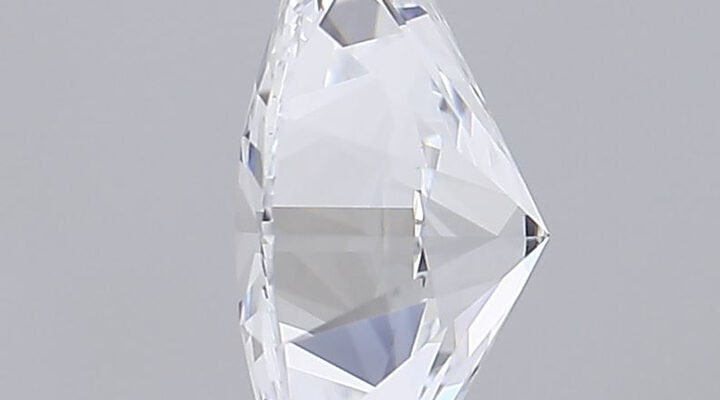
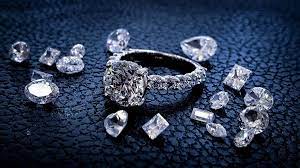
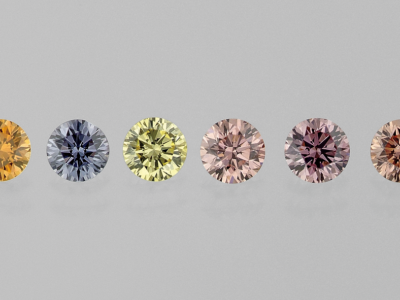
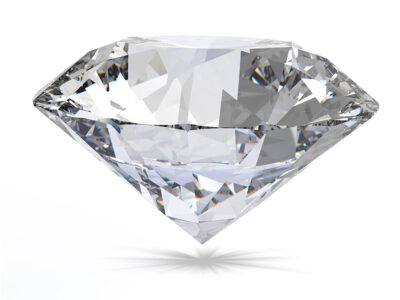

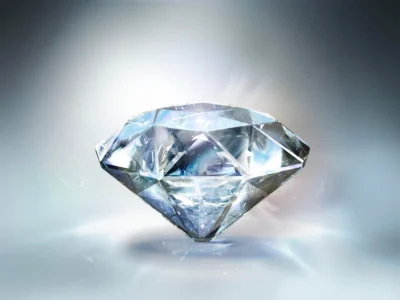
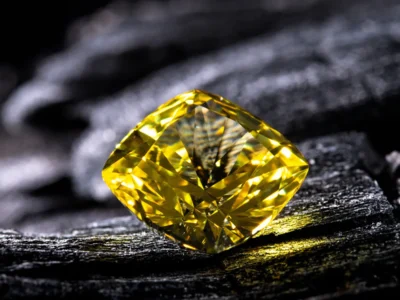
Comments